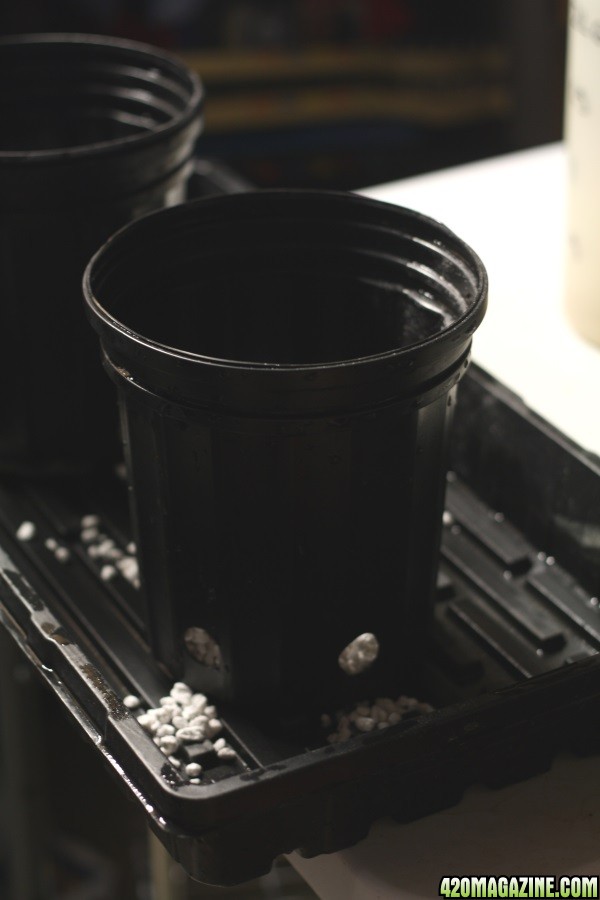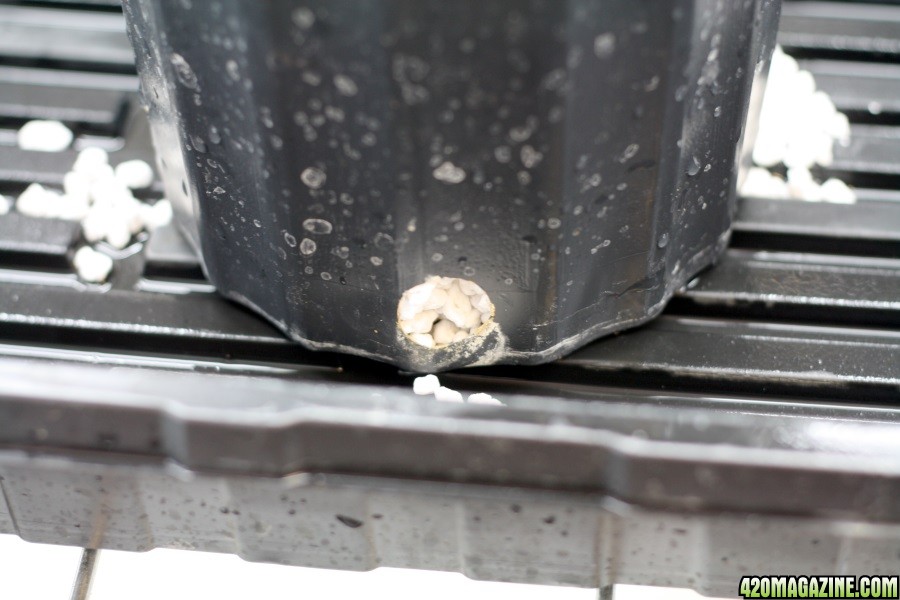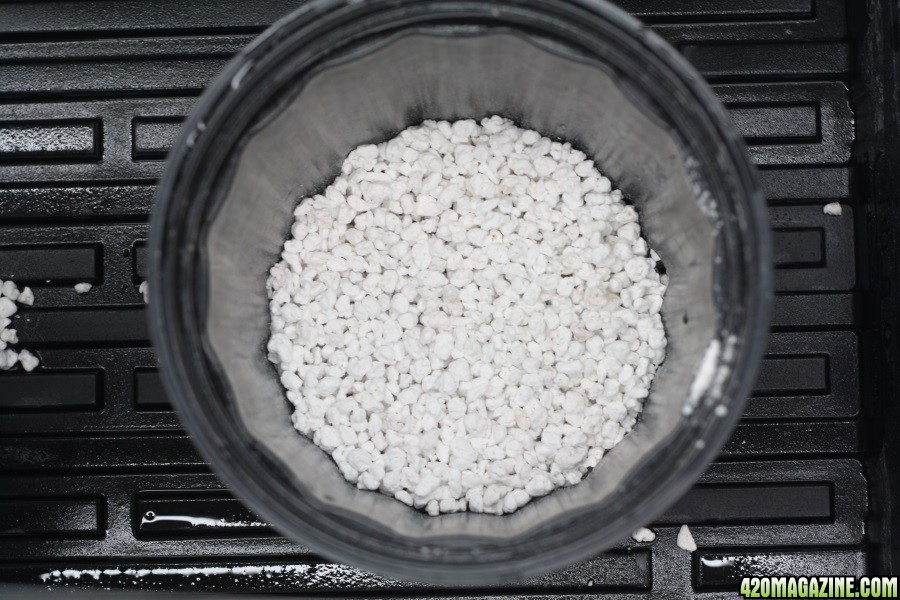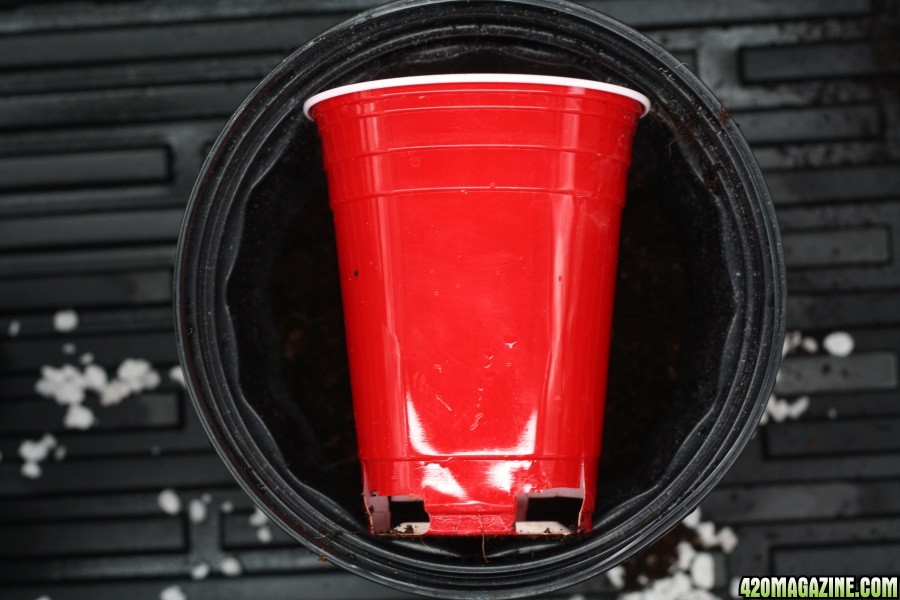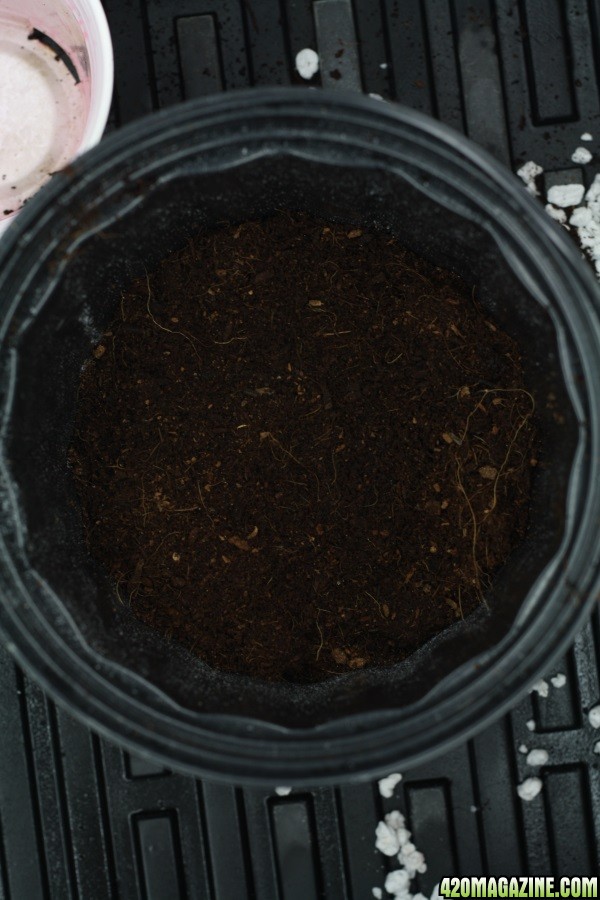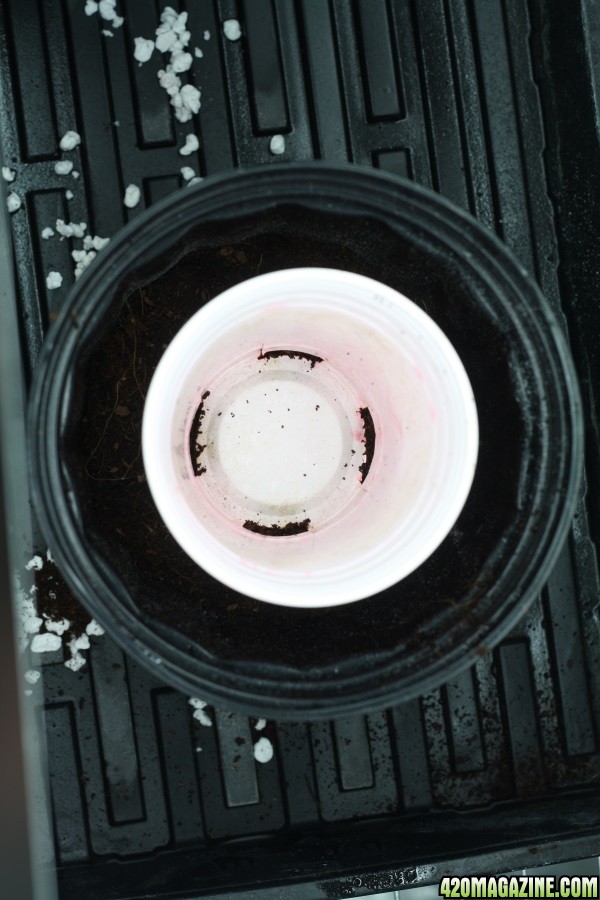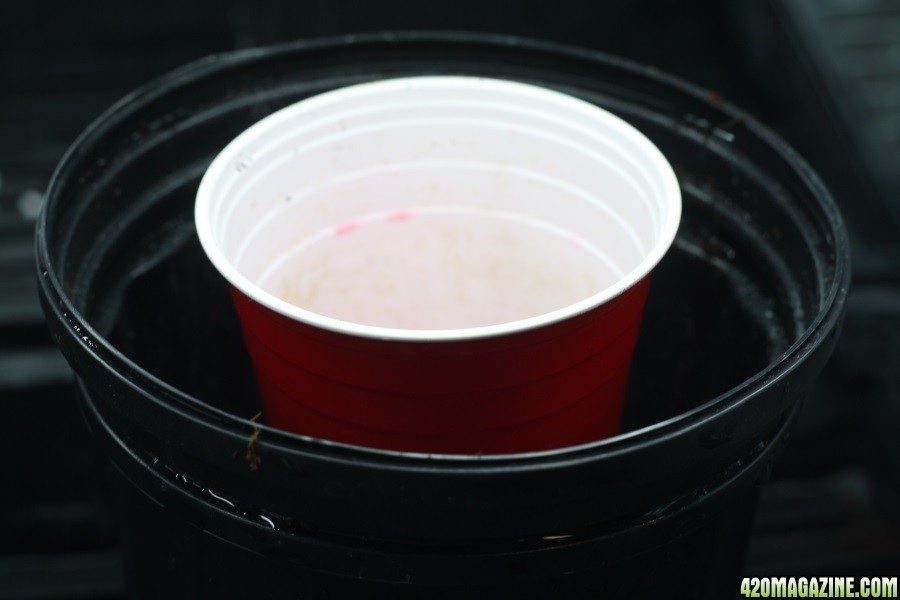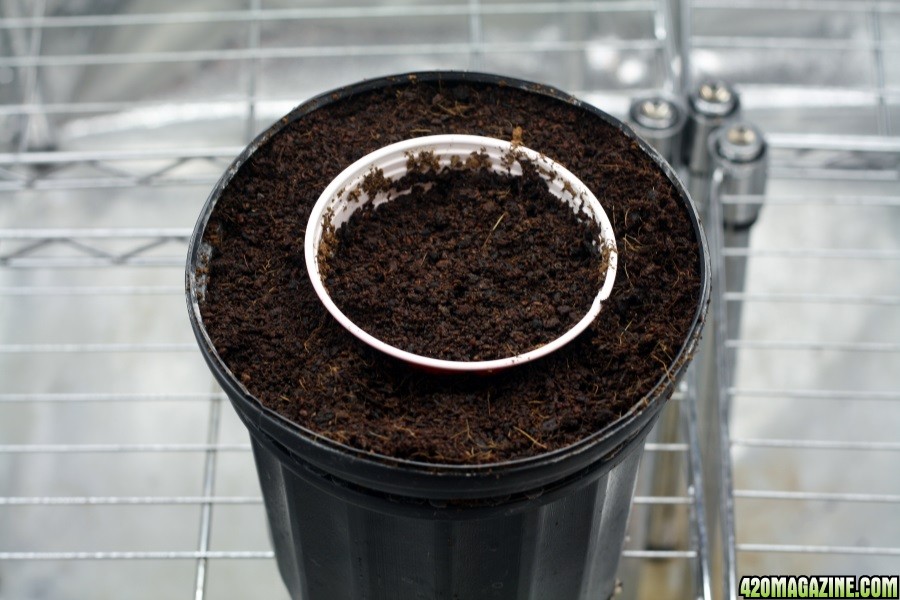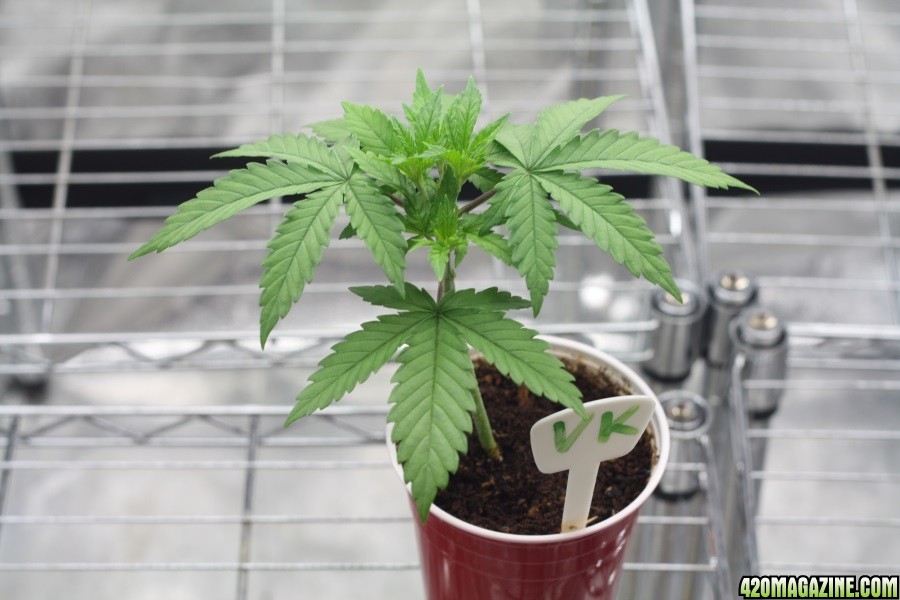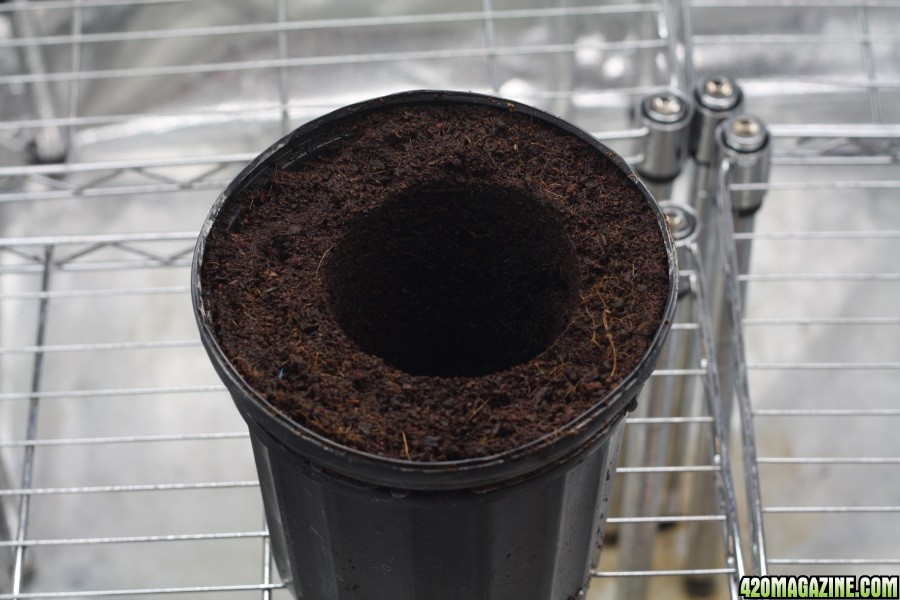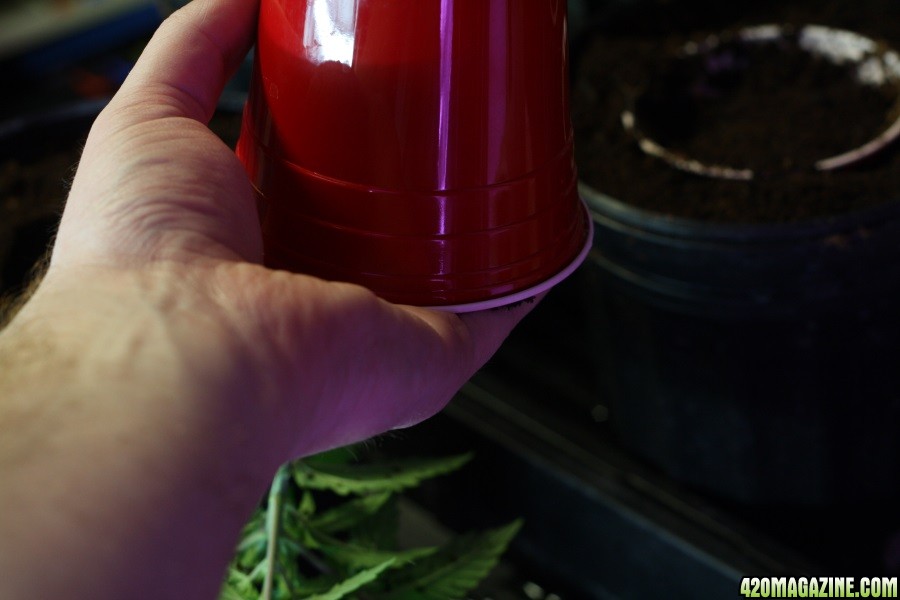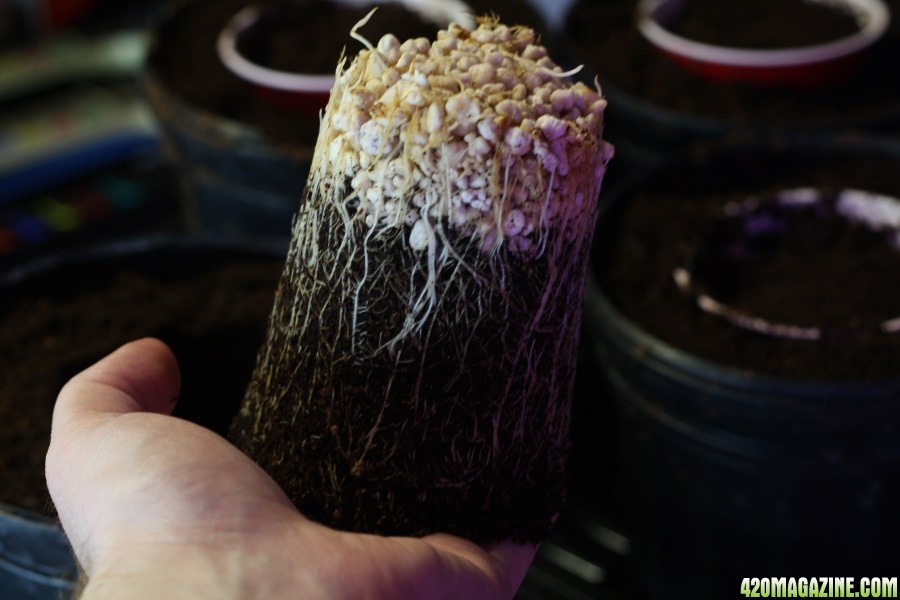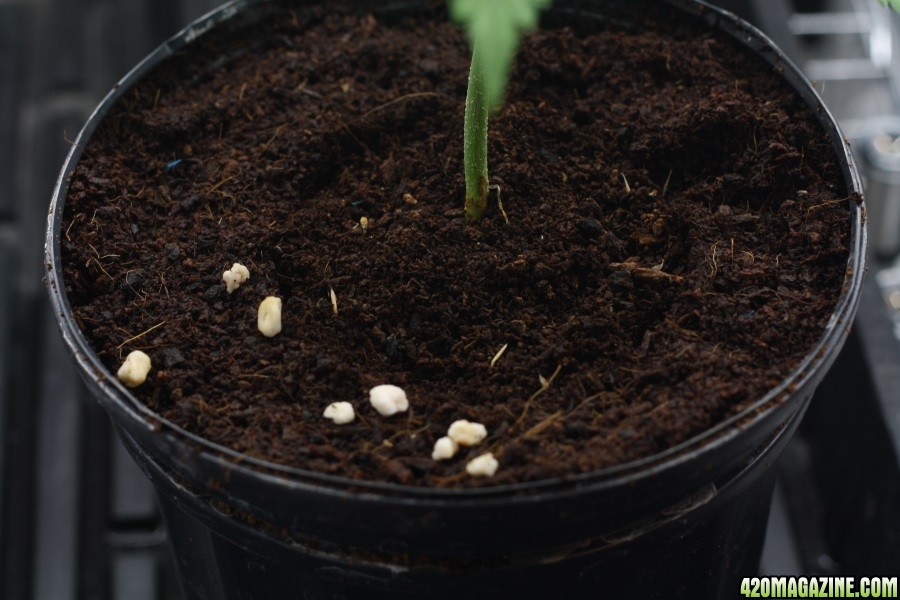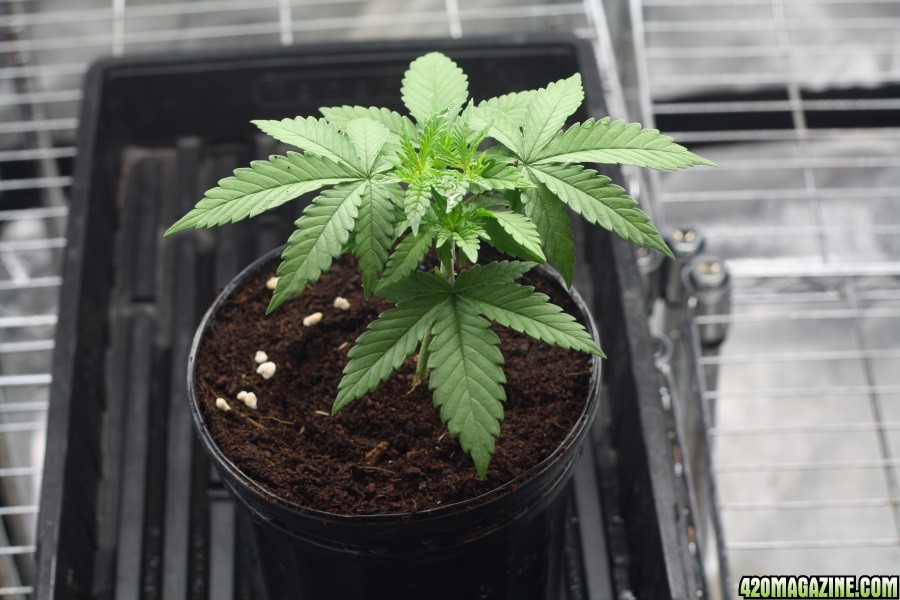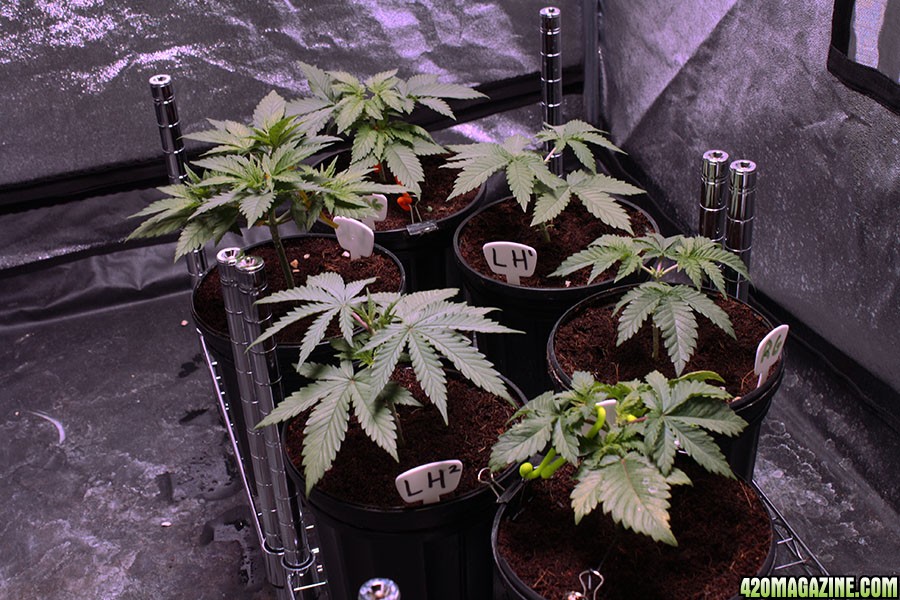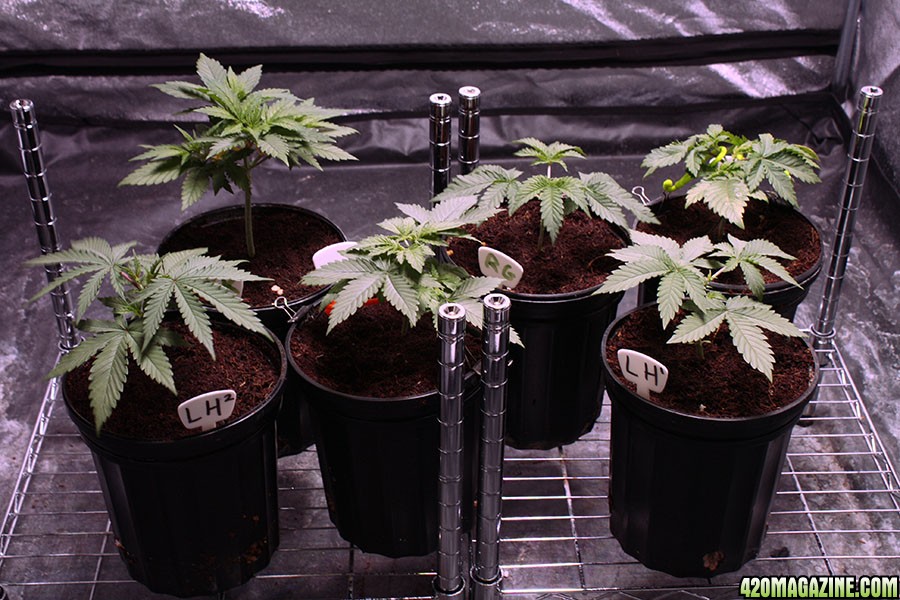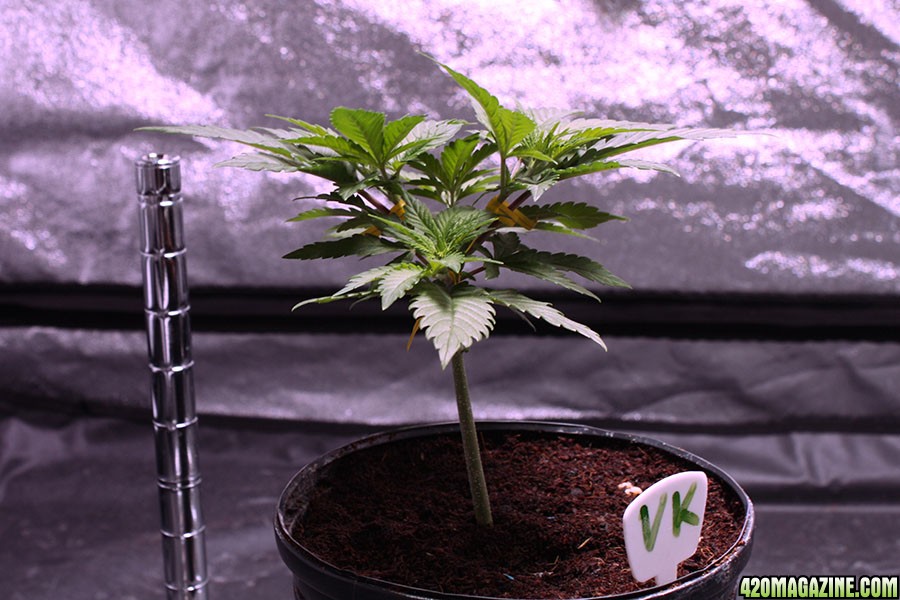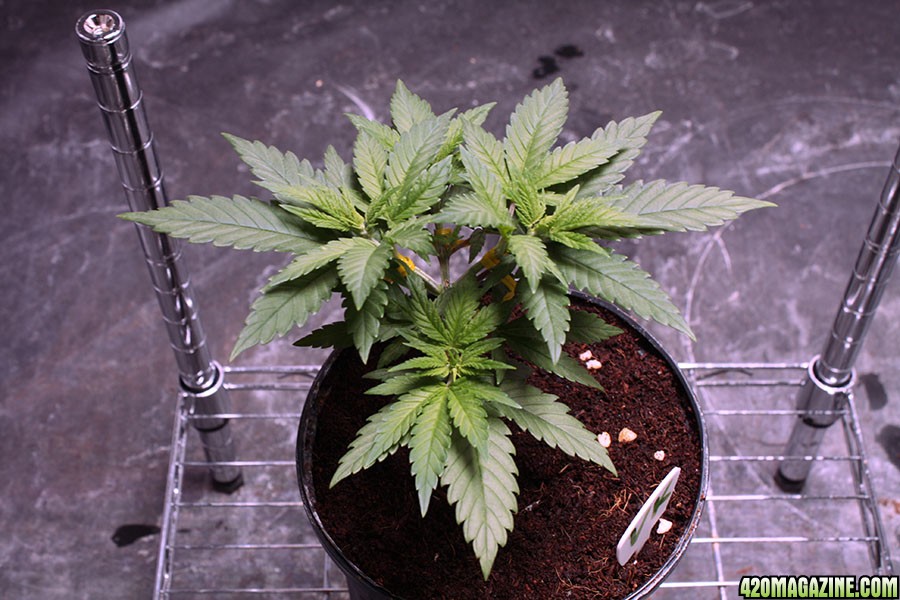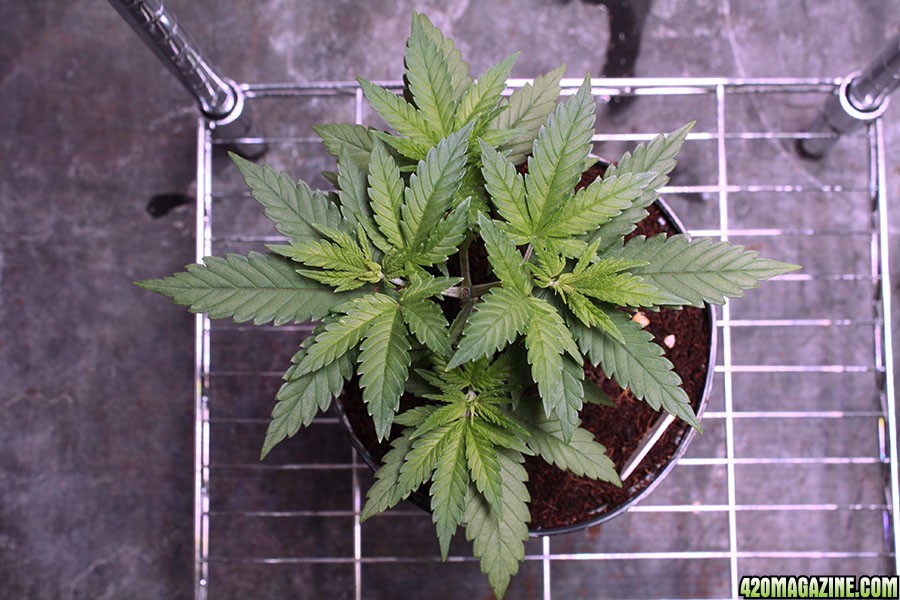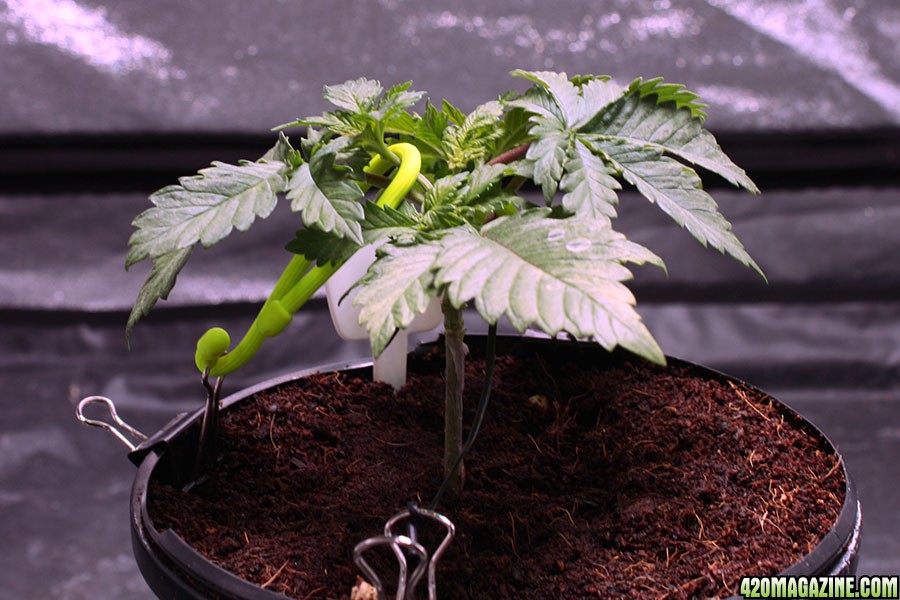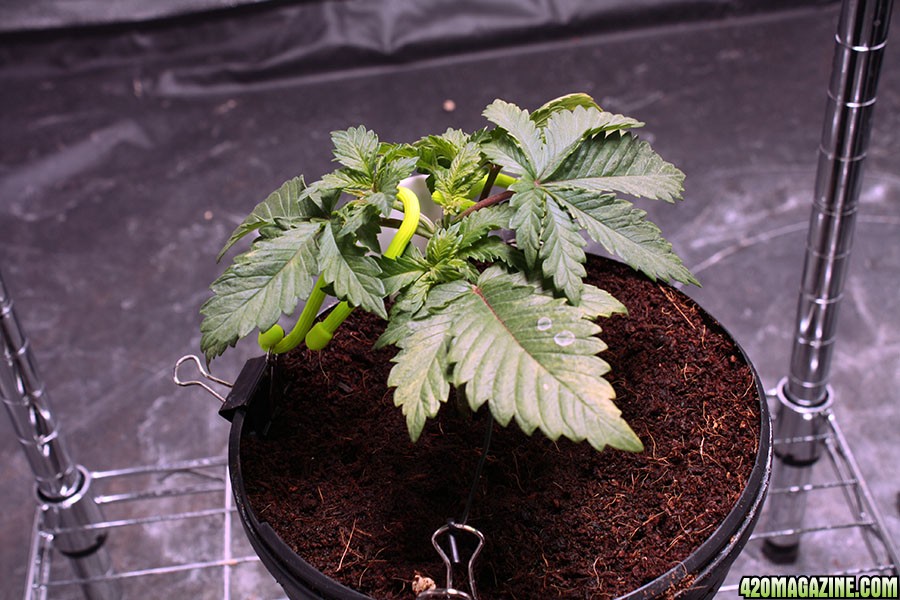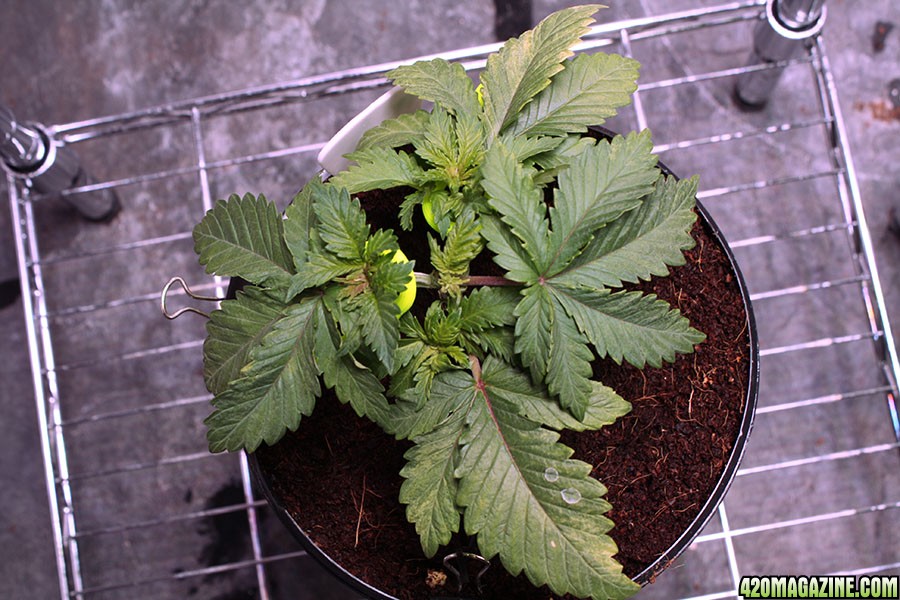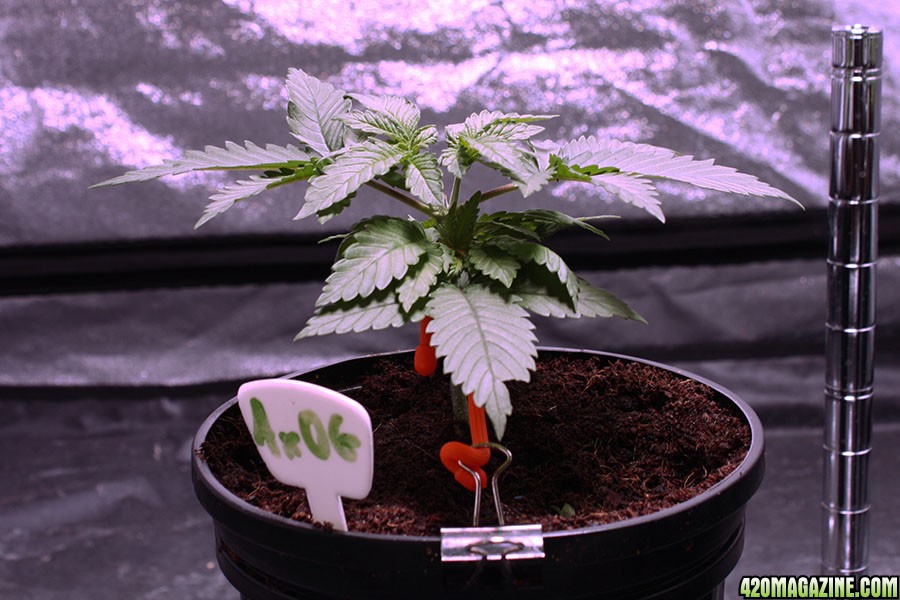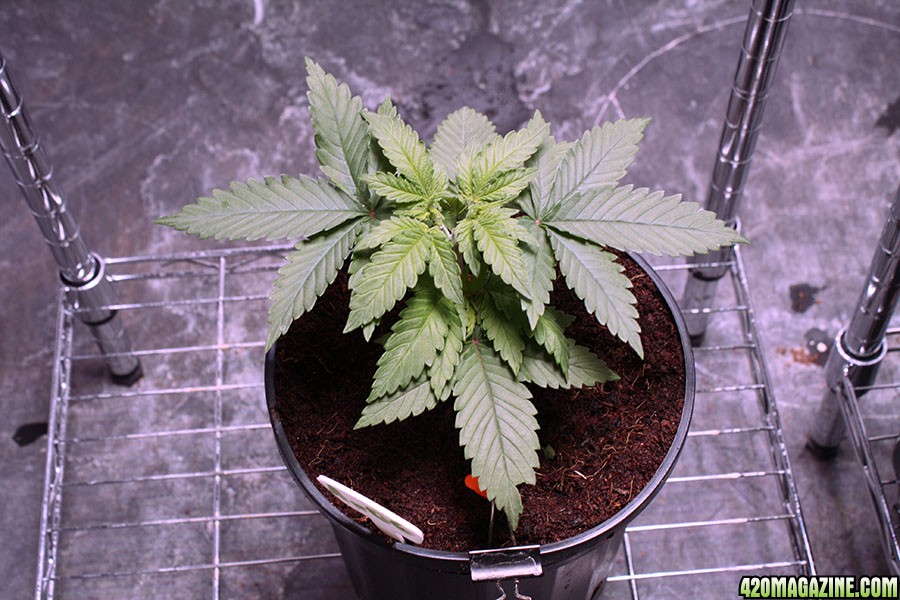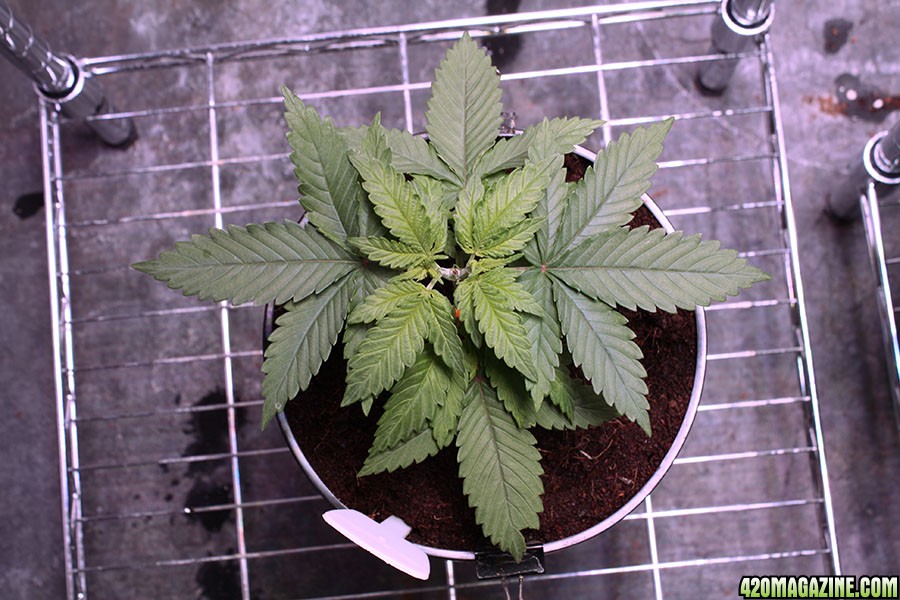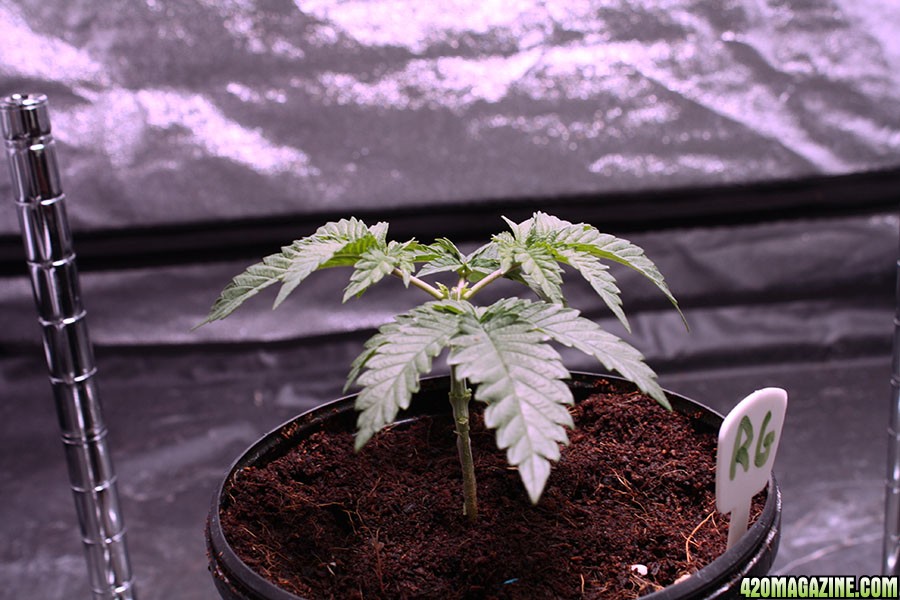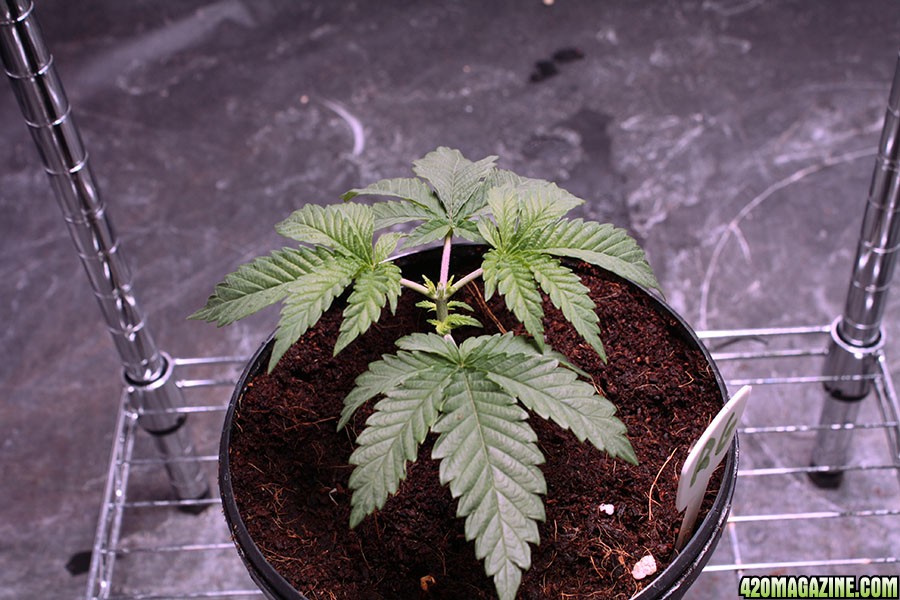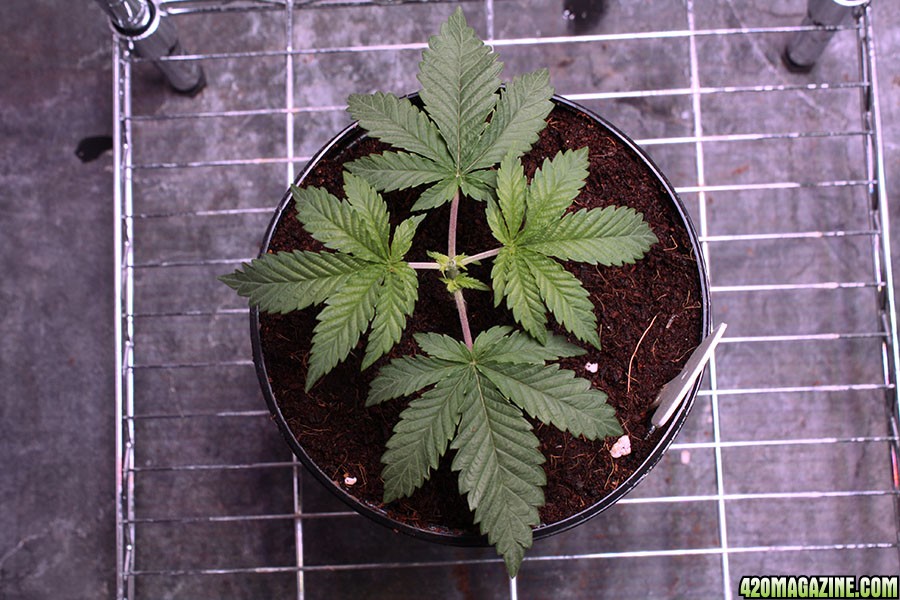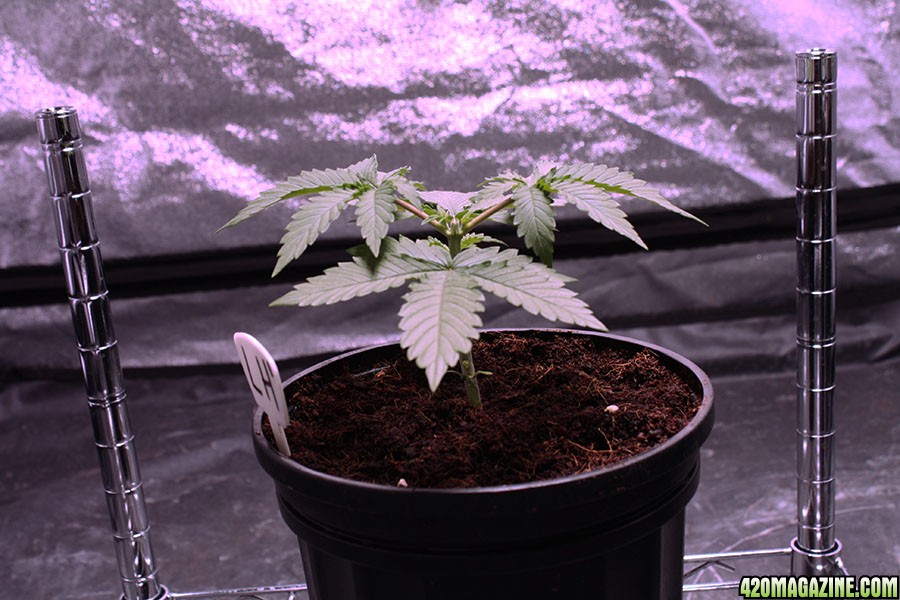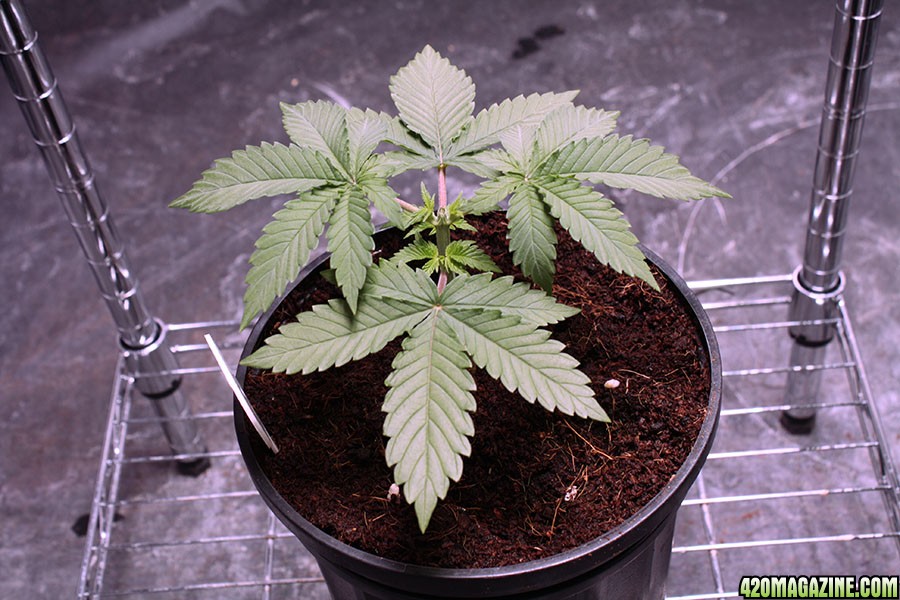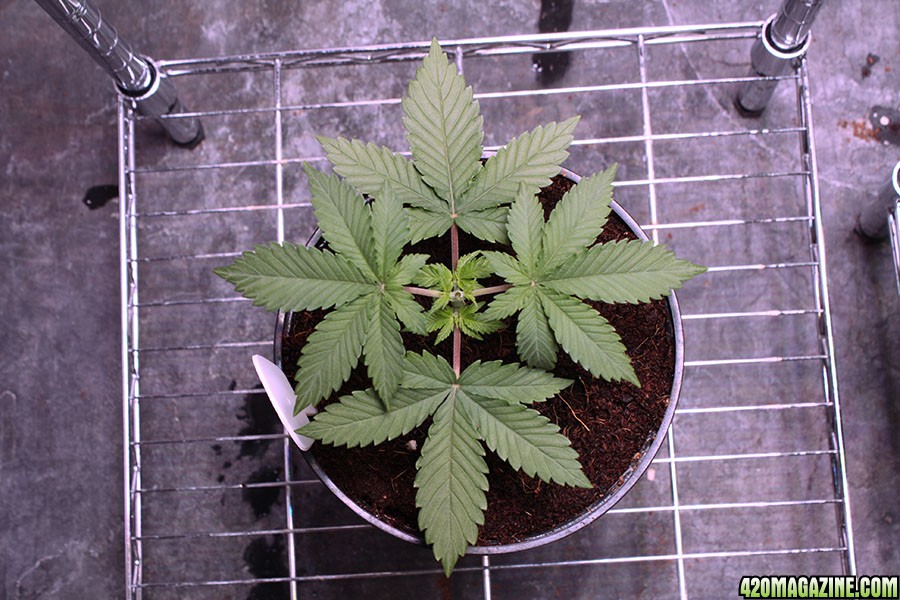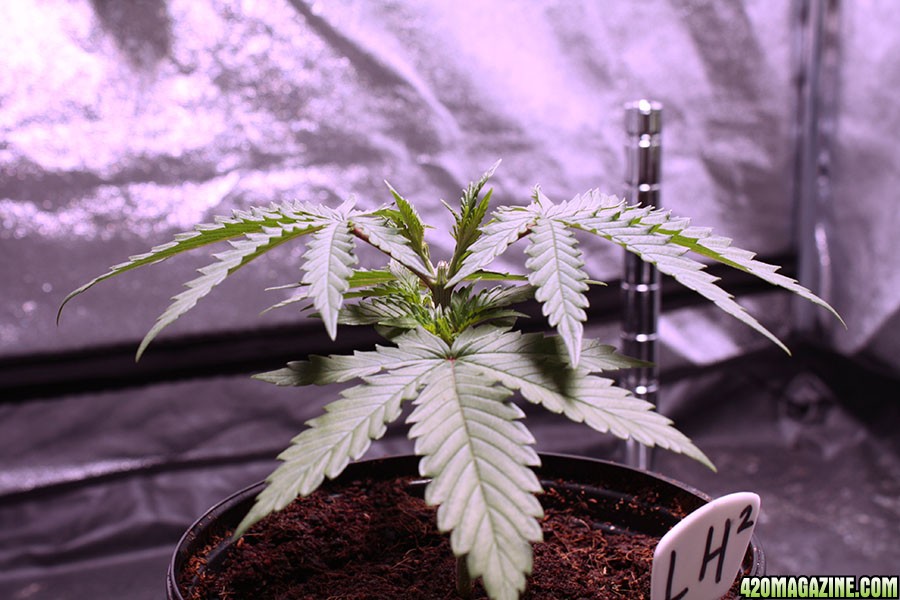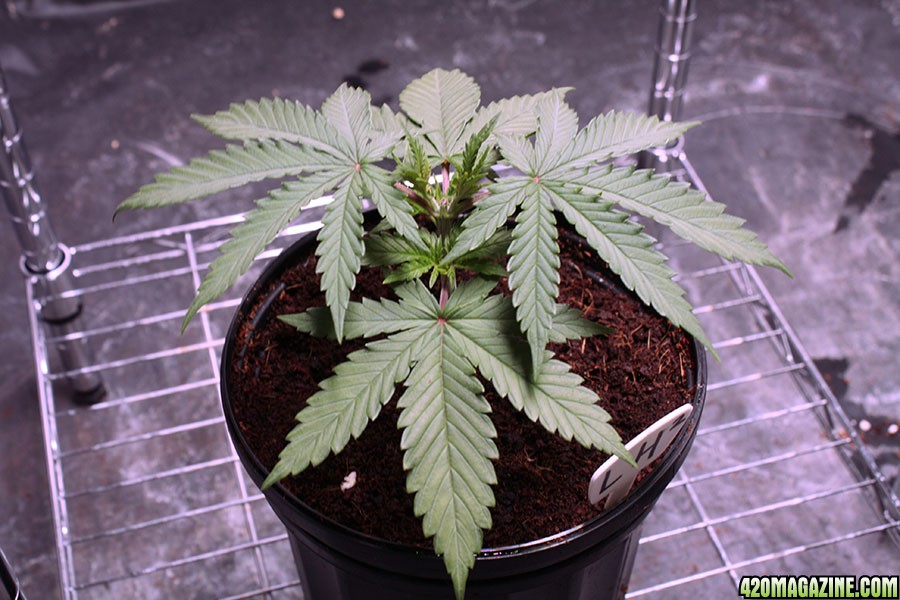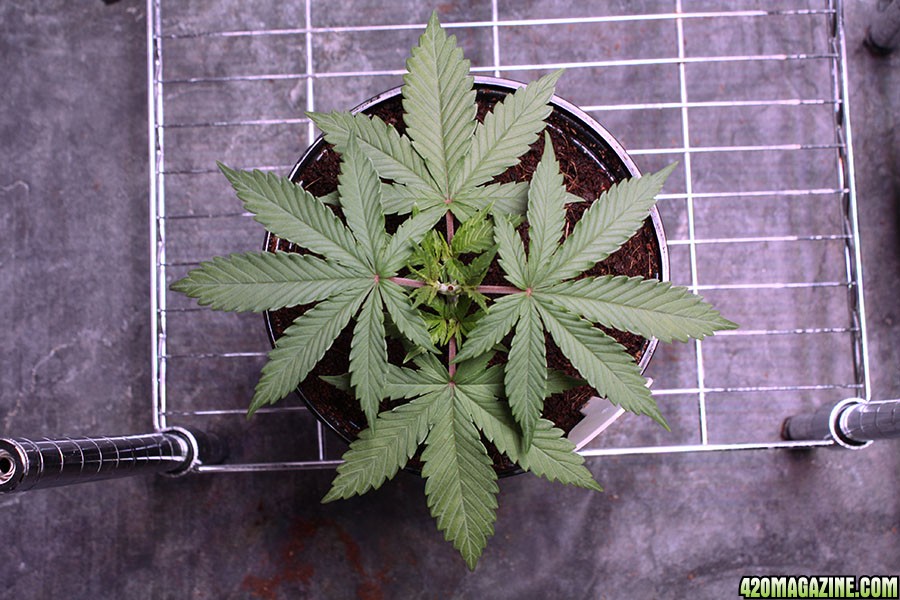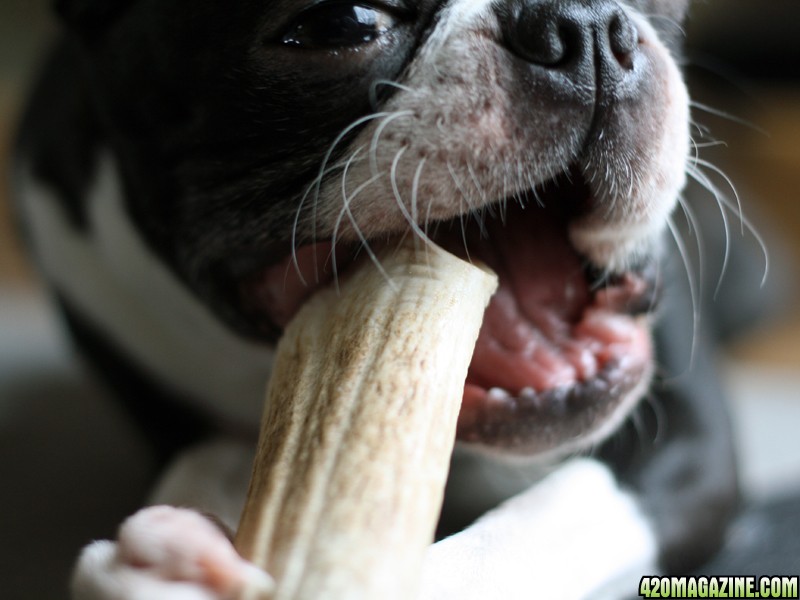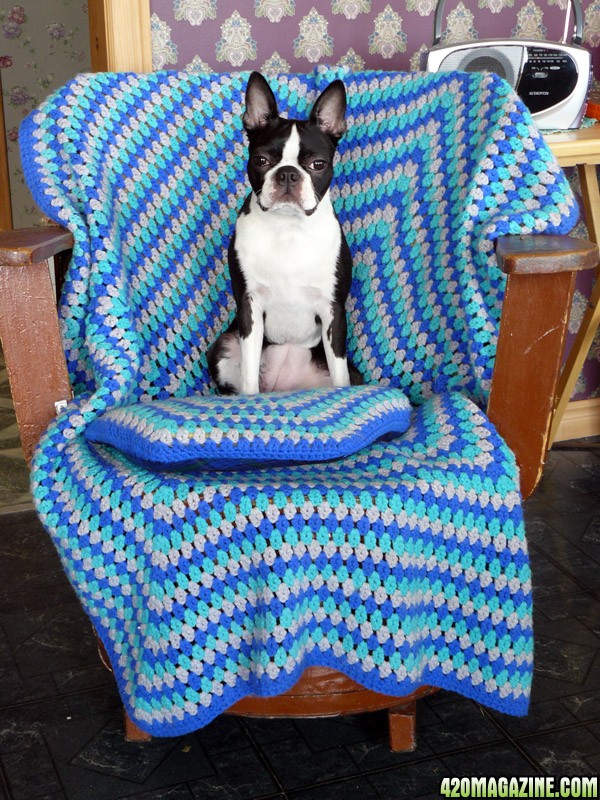I transplanted my plants into 1 gallon plastic pots on the weekend and thought I'd share my process. Many would go directly to 3 gallon pots here, but I like the intermediate step, as I feel it gives a better opportunity for superior root development. The second round of transplant stress, however, demands a longer veg. But as I run a perpetual setup, I typically have to wait for the flower tent to open up, and I don't mind the additional time in veg to develop the canopy. In this specific case, I really want to see Royal Gorilla make it to flower when I flip rather than waiting for next round, so the longer veg was particularly justified.
Before transplanting I'm looking for vigorous growth. Transplanting is stressful and I want to give the plant the best chance of success in the transition, for the fastest recovery. In the case of the Violator Kush which I used for this tutorial, I topped before potting up, so that it would be off to the races once into the new pot. Violator Kush was topped last Tuesday and after 3 days clearly was ready to be potted up. She was ready after 2, really, but I needed to wait until I had time Friday night.
The first few shots are from Wednesday night, when I started my preparations. I use a pre-washed coco, the brand is Mo'Koko, and have used it without rinsing before without issue. But I want my plants to have the best possible start, so I decided to give the coco a light rinse before charging it.
The first step in the process is the bottom layer. I started out growing using perlite mixed with my coco as my medium but like many coco growers found the perlite unnecessary. However, I still use perlite on the bottom of the pot to help with drainage and prevent pooling. My pots go directly onto wire stands, which helps minimize this potential issue, but the perlite is an easy addition to be safe. I fill the pot to the air holes with perlite, about 1 solo cup worth.
I then grab a solo cup with holes punched in the bottom for use in the pot. This serves two purposes. First, it leaves a hole the shape of my root mass that I can drop my plant into for a perfect fit. Two, it gives me leftover coco to use for patchwork once I'm done. As you get better at transplanting you'll need far less additional coco, but for your first few tries this is handy to have.
I start with a couple of scoops of coco to form a base of coco for the solo cup to sit on. I use a standard garden trowel. Basically, you want enough so that the lid of your solo cup is flush with the top of your pot when you place the solo cup in.
Then I place the solo cup in and start filling the pot up with coco. It can be messy, so situate yourself accordingly. After finishing, I pour about 2 litres of plain water through the coco to give it that rinse that I mentioned, and set it aside.
Fast forward a day, and while feeding my plants for the day, I pour nute solution into the pots to the point of runoff. As I'm going to be transplanting in plants that are feeding to my week 4 veg solution, the week 4 veg solution is what I'm pouring into the coco.
A day later, and I'm ready to transplant. My plant has recovered fully from her topping earlier in the week and is growing quickly again.
Again, before starting, I "feed" nuted water into the coco. I again use my full strength solution for week 4 veg which the plants have started.
After feeding, I take the solo cup out. The texture of the coco gives a nice stable opening into which to transplant. Had I used perlite, the structure wouldn't be so easily kept, in the host or the destination.
My solo cup looks damp from last night's feeding, a good sign. I don't want my coco in the solo cup from which I'm transplanting to be too dry, or it could get messy in transplant. Too wet and it will be tougher to get out of the solo cup. Having fed yesterday, this is just right. I work the cup in my hand, gentle squeezing to get the intact root mass separated from the sides of the cup. I could use a butter knife or ruler to separate the sides too, but you risk irritating roots. It's hard to describe what I mean - think of it like making a snowball, gentle squeezes around the edges to loosen the root mass from the cup. Hopefully the photo illustrates somewhat how I squeeze it and how the mass will separate from the cup.

Once I'm satisfied it's in good shape to start the transplant, I push up from the bottom of the solo cup to dislodge the mass. Think of it like popping a lozenge or a piece of gum out of an aluminum foil packet. Hold the cup with one hand, use the other to push up from the bottom.
Once it's loose, I put my palm flat on the top of the coco / cup, with the main stalk in between my fingers, and turn it upside down. It should easily slide out at this point.
Then it's simply a matter of placing it into the destination. It should fit pretty snugly. If things are misaligned, use the extra coco from your solo cup to smooth out the surface.
Given that you've already watered the coco, you can even skip watering at this point - your roots should go out searching for the water all around it and leech it in. I like to treat it like a seedling, and give it a few drops around the point of the transplant.
Success! Hope this tutorial helped someone!



